Taking into account the dilemma between Singapore’s historical sensitivity towards civil disobedience and the push for greater transparency and democracy, this thesis speculates how civil discourse can occupy a more permanent and legitimate place in our society in the near future. Architecture hence comes into play to mediate this uneasy position.
A Progressively Outspoken Outlook
In light of the watershed general election of 2020, there has been expectations that Singapore will transition into a more competitive democracy. From staging protests to conducting a “trial by internet”, citizens are demonstrating an outspoken outlook which is increasingly displeased with the paternalistic mindset of the state. Yet time and again the government has in moments of doubt opted for authoritarianism over accountability. Liberal ideas of justice and democracy are often linked with chaos and instability, portraying freedom of speech as a vice that should be tightly controlled or removed. Judging from the election results, the government’s hegemonic and hierarchical instincts is quickly reaching its end of the rope and something has to give before it escalates into a full-fledged riot in the future.
Reimagining Chinatown
The crux of the problem is having to strike a middle ground between an increasing number of citizens who desire for a more liberal democracy, the government’s inclination of shutting down free speech due to an entrenched myth of vulnerability and societal fear of change and insecurity.
Chinatown is demarcated as a green zone for civil discourse with incentives for NGOs and humanitarian organisations to set up their offices in the district. Civil discourse is speculated as a desirable and managed activity economically which can help to boost Singapore’s image as a creative and vibrant society. The key facility for this district is The Commons, an alternative parliament for the common man.
The Commons
With societal and historical sensitivity in mind, this thesis theorizes that the government will not allocate a free space purely for civil discourse so as to maintain a degree of control. In line with how gambling is allowed to take place within a larger framework of tourism and entertainment, the primary function of The Commons is a wet market and hawker centre which celebrates our local hawker culture and bolstered as a tourist hotspot. Its function as a space for civil discourse comes in secondary.
The Commons is essentially a wet market and hawker centre on most days and an alternative parliament on others. Due to the operating hours of the wet market from morning till noon and the flexible working days of the hawker stalls, it offers up certain windows of time in which the wet market or hawker stalls are not in use. With a flexibility in the arrangement of spaces, programs which facilitate civil discourse can fill in the gaps within these windows of opportunity. It is an economical and productive use of a building which can transform its spaces according to different needs. This is a solution which also reflects the government’s position on free speech. The availability of the space for civil discourse is dependent on and controlled by operating hours of the wet market and hawker centre. While there has to be a space for civil discourse, the mundane appearance in addition to the multi-functional character of the building makes it clear that it is a pragmatic move made by the government, rather than a place which glorifies dissent.
The Sanctuary
Alongside The Commons, The Sanctuary comprises office spaces for NGOs and humanitarian organisations and an asylum/ help centre within the district. These spaces will occupy the backend of the shophouses and temporary extension of the space will be allowed into the back lanes. They are lower in value with cheap rental fees to incentivise the organisations to set up their offices there. This presents Chinatown with a new image as a space for the common man instead of its accepted touristic and artificial image currently.
Chinatown: A Green Light District
Contrary to becoming a breeding ground for anarchist or extremist tendencies, Chinatown as a green light district aims to create a climate which is more forgiving and a society which is more resilient. It is a zone where political diversity and dissent is tolerated due to a common consensus that it will benefit the state moving forward. It is in hopes that the reimagined Chinatown will be able to usher in a new era for Singapore.

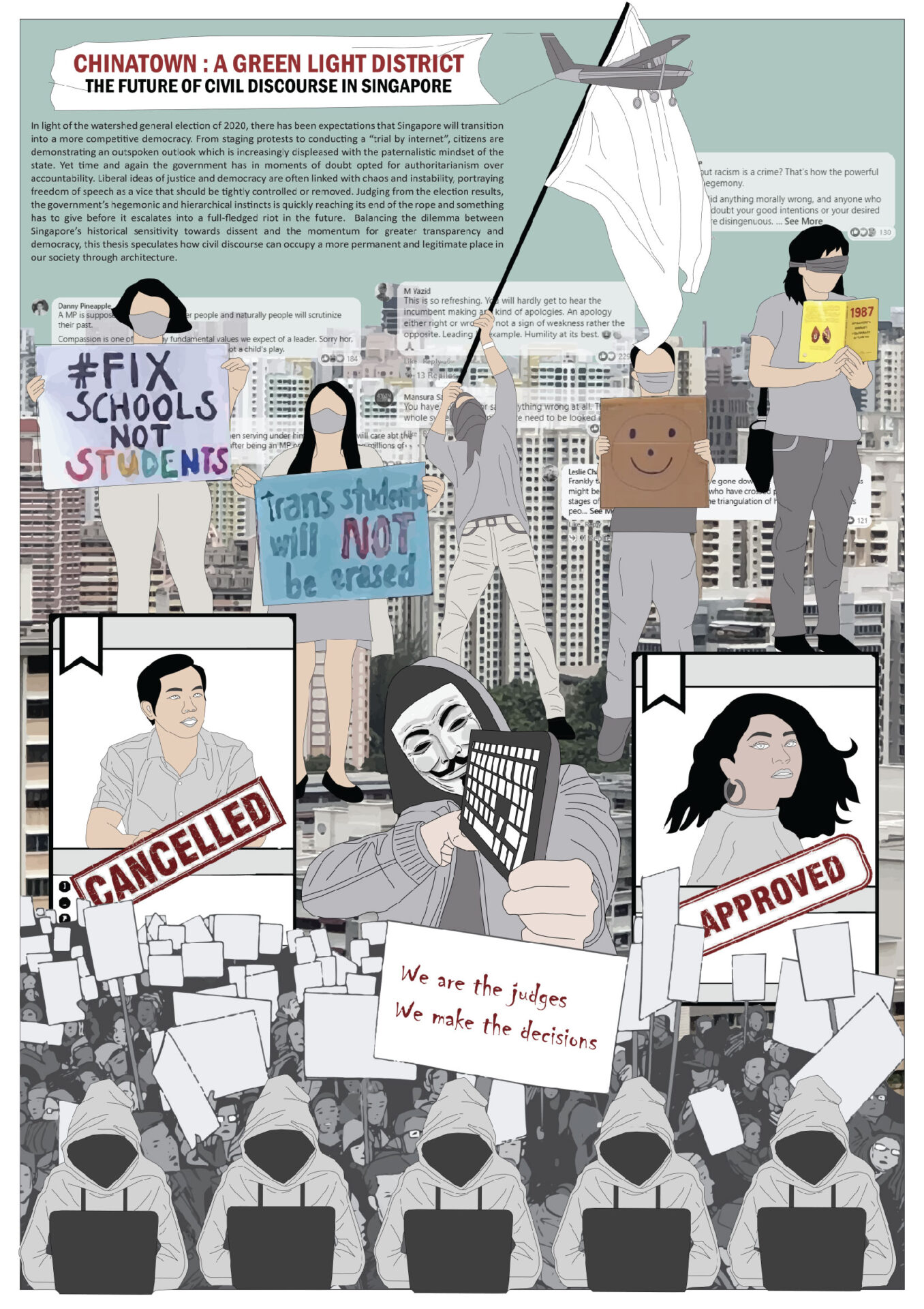


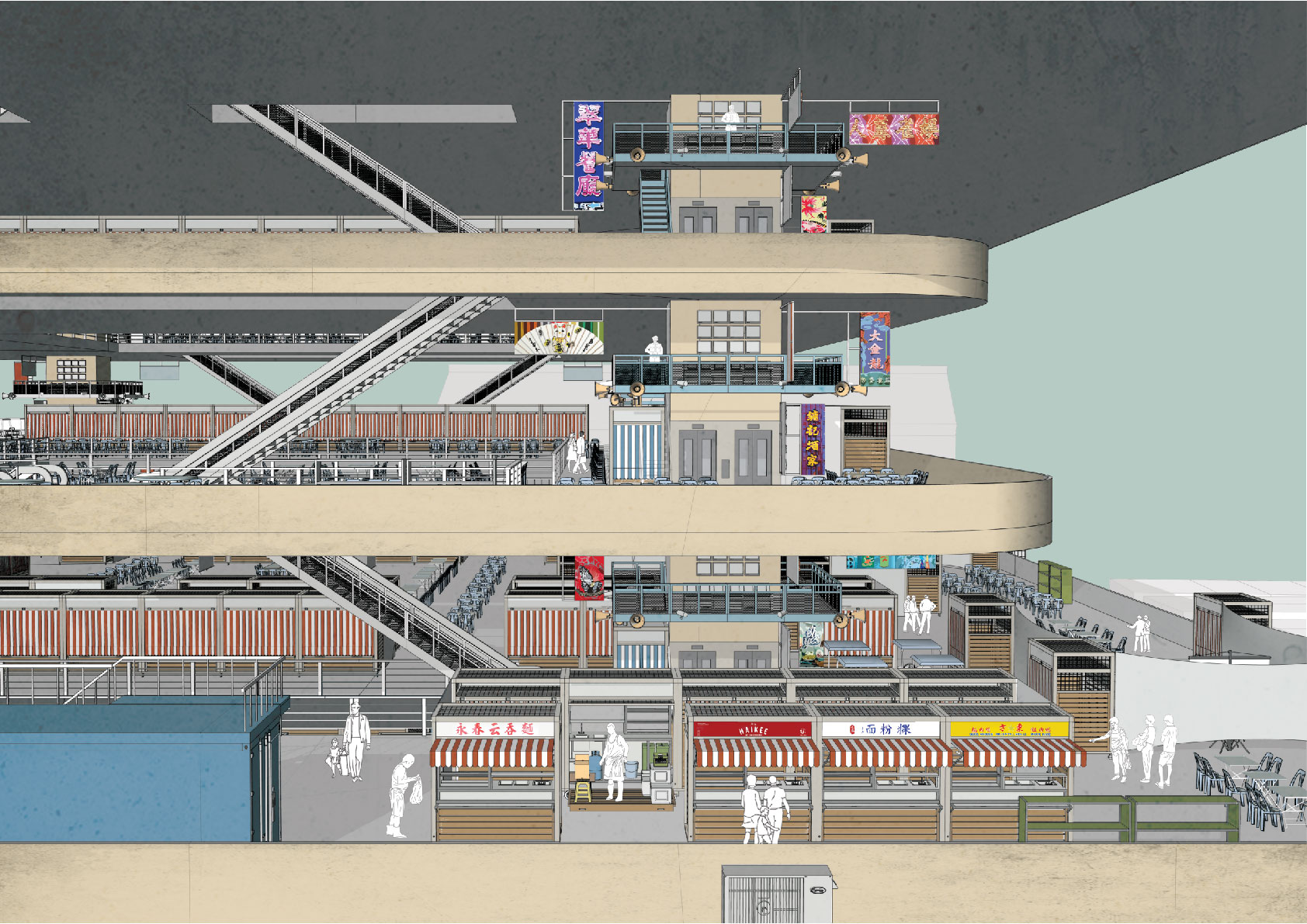
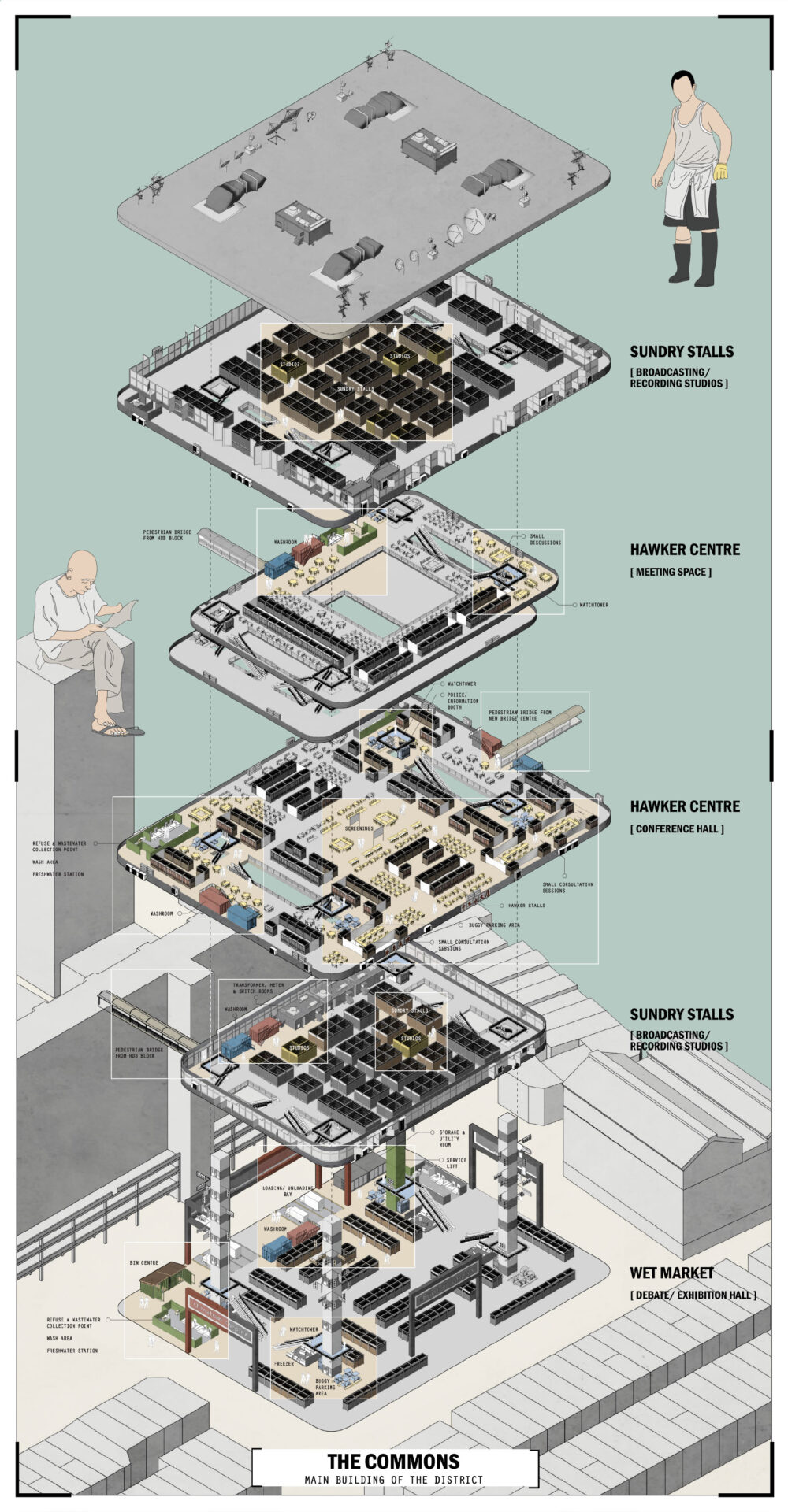
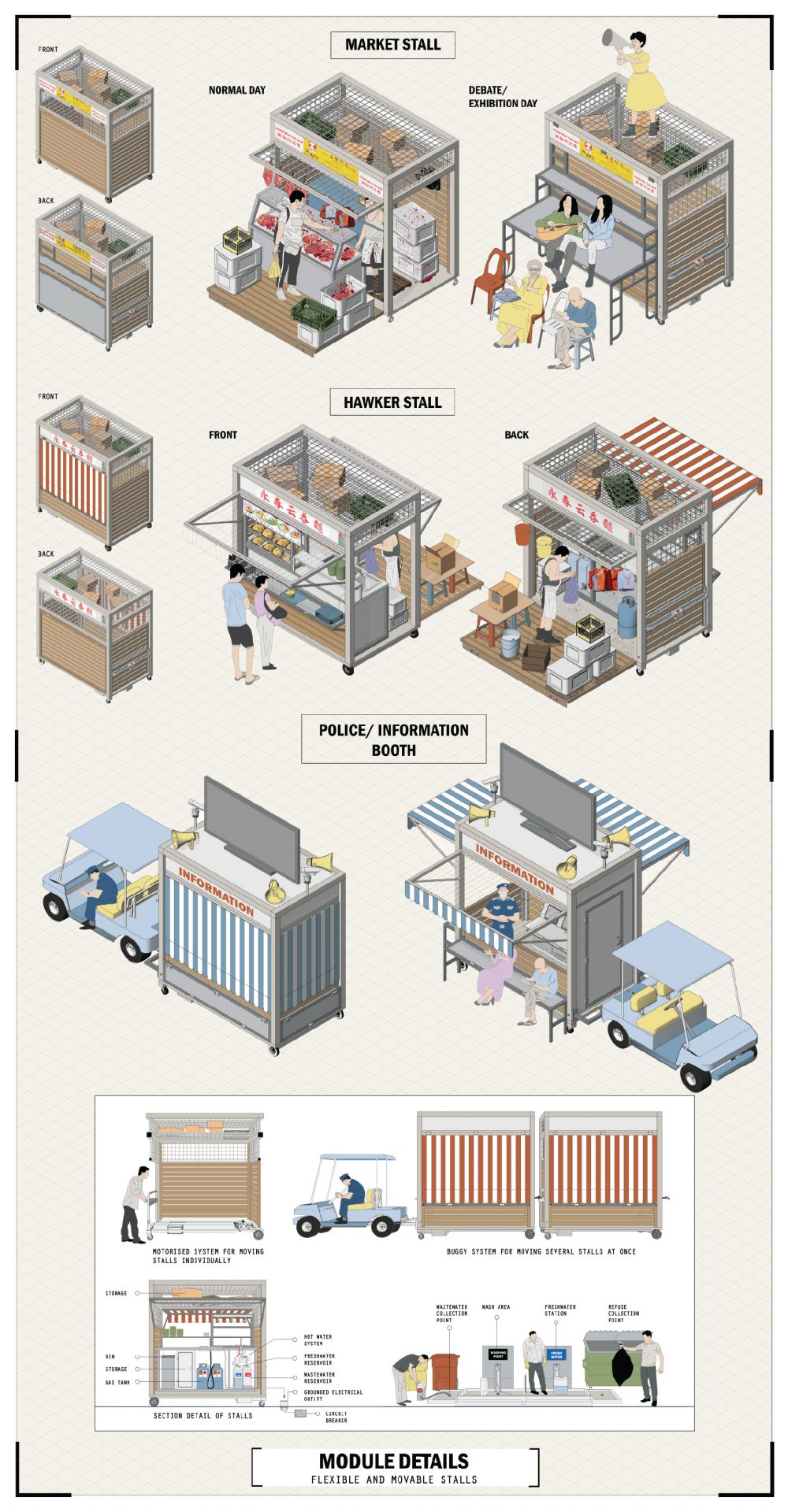
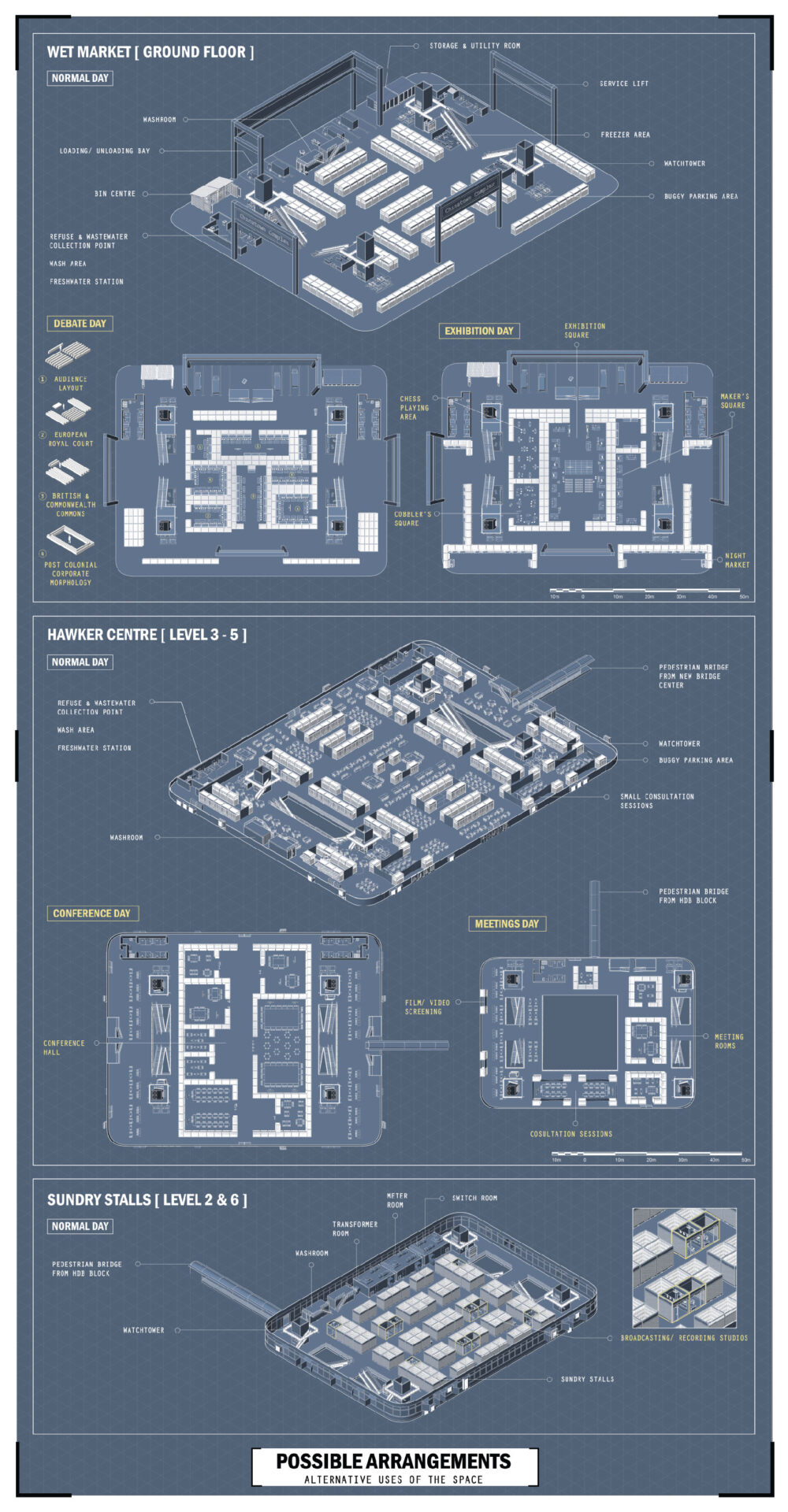

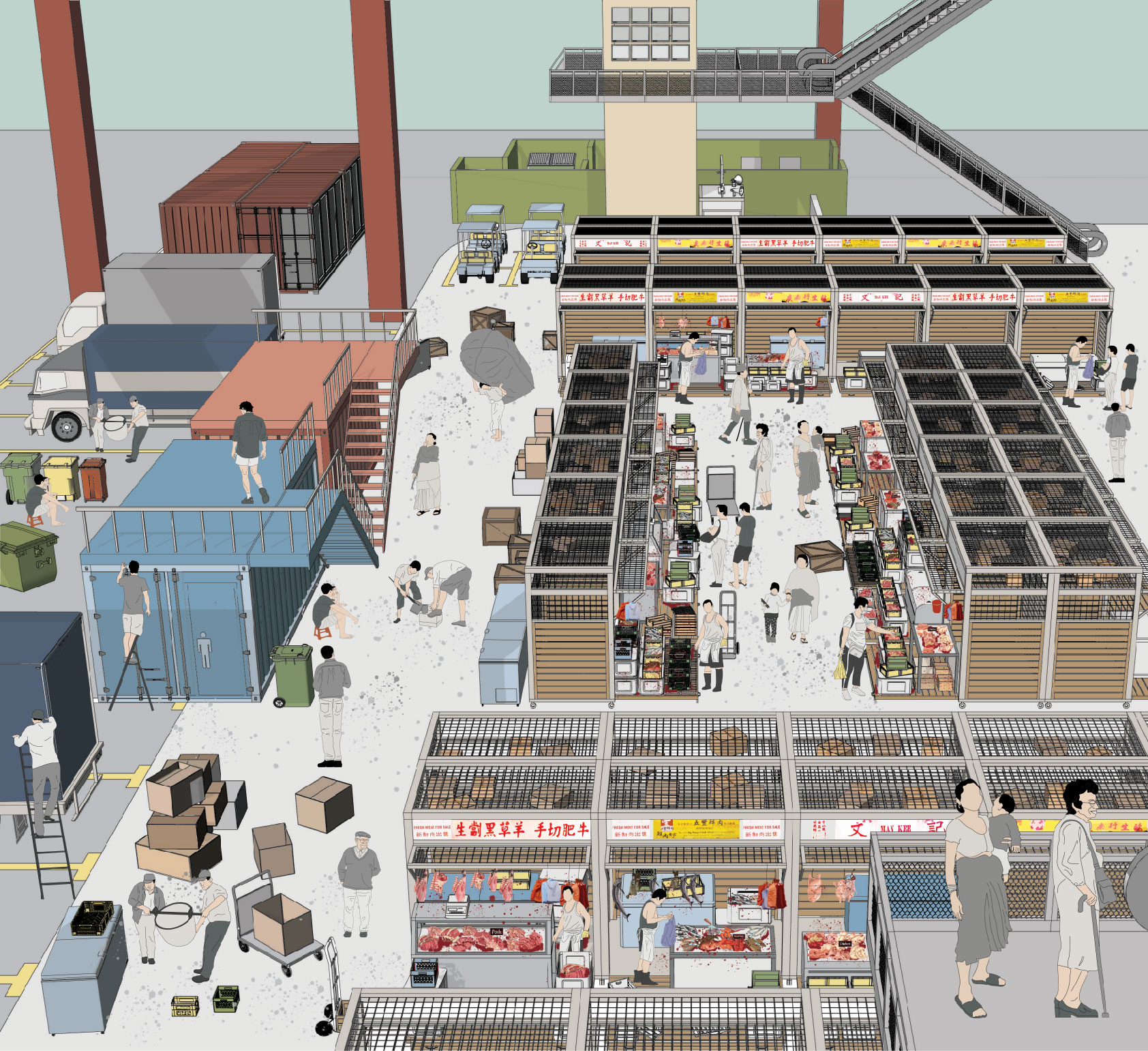

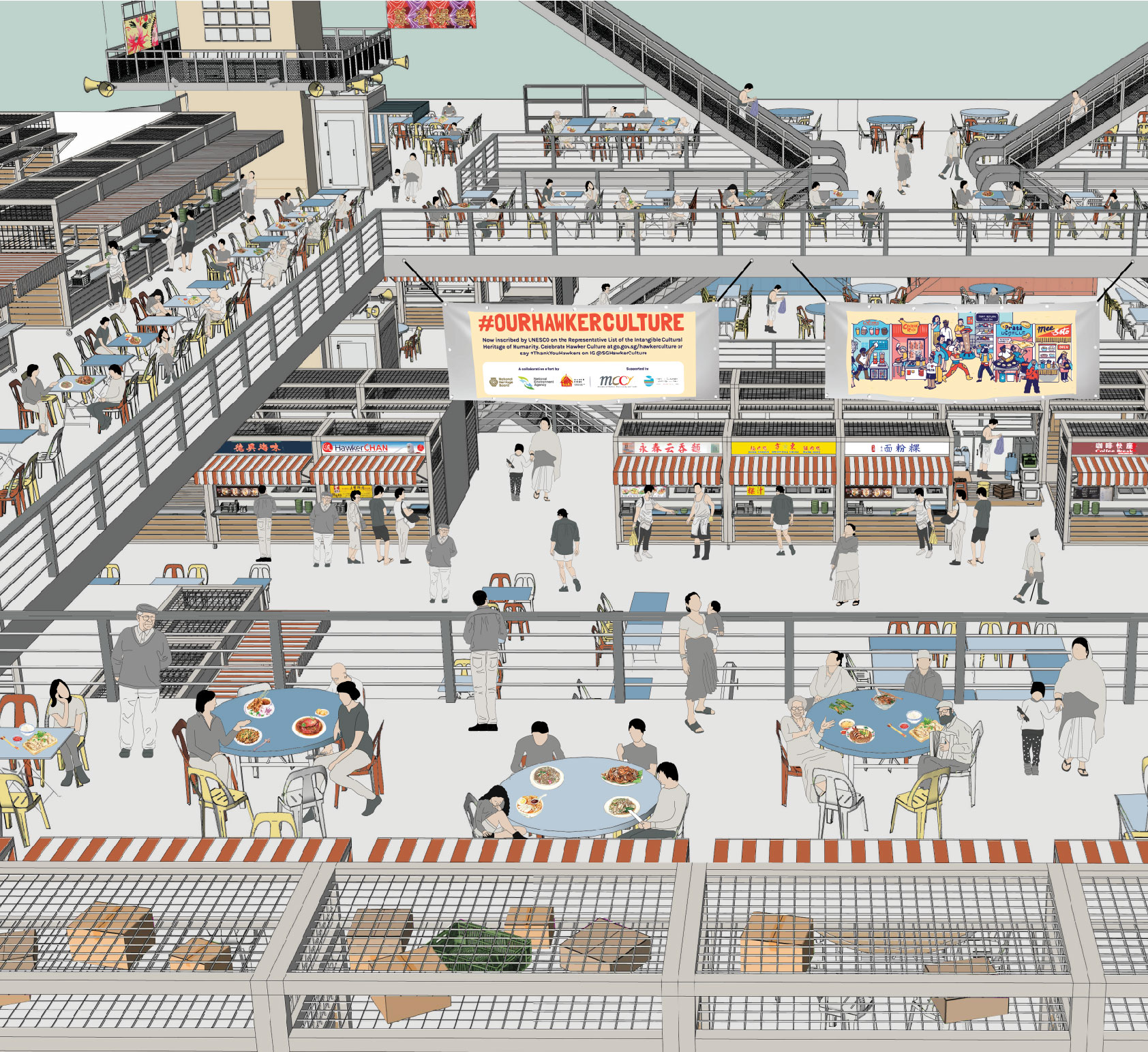



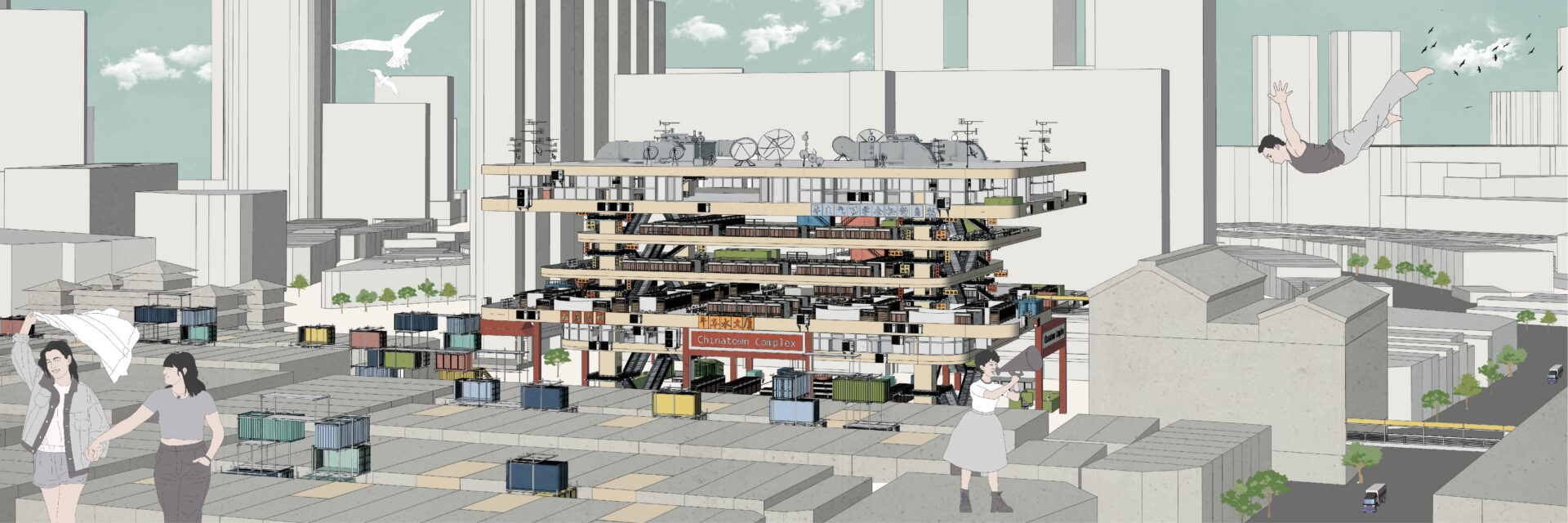
Supervisor's comments:
Given that its stability and prosperity has been built upon strict governance, how will the ever-growing desire for a more open, politically active, and discursive society change Singapore’s urban landscape?
This project asks: What could a space of collective and actionable civil discourse take? It re-imagines the ubiquitous coffee shops, hawker centres and wet markets, as a new typology – a flexible multi-functional space which operate interchangeably as a food centre/market/sundry shop/Peoples’ Parliament.
Central to the idea is an open floor plate with cleverly conceived modular, mobile and transformable units. These can serve as stalls, enclosures, and tiered seating, making the spaces full flexibility to be configured as market/hawker centre or parliament at any given time.
The project’s depth lies in how it engages and critiques multiple tropes – Urban design and architecture as tools to control vice and dissent, the fabricated realities of Chinatown, the difficult delineation between control and anarchy, the cautious and hesitant steps towards open and effective civil discourse, and the exploitation of ‘hawker culture’ for tourism.
- Adj. Asst. Prof. Peter Sim